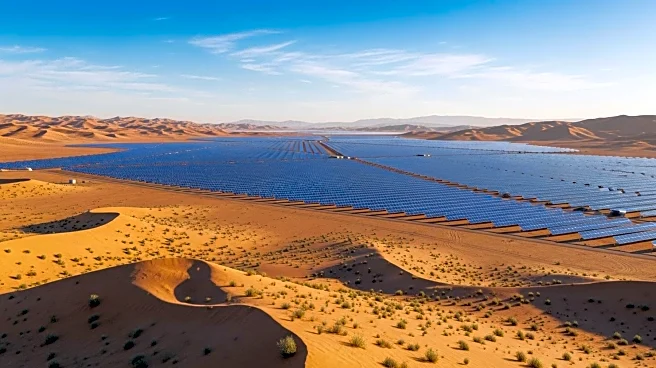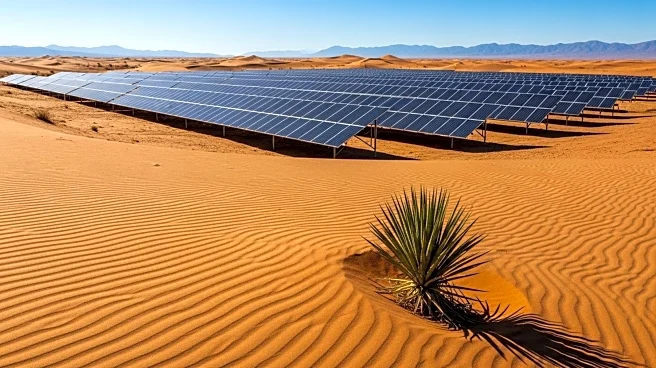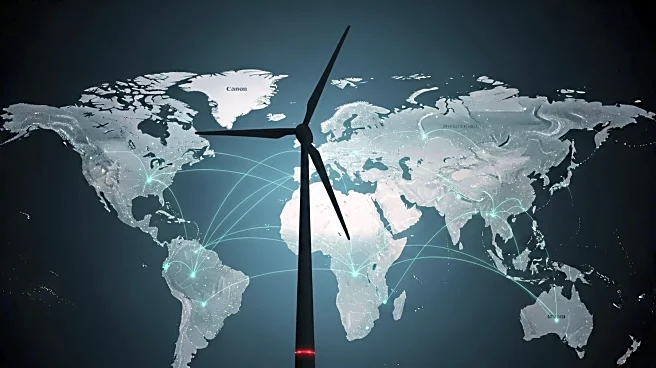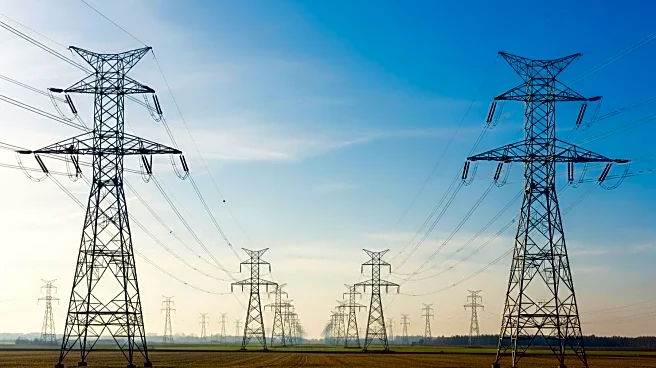What's Happening?
Recent research from China indicates that large-scale solar panel projects in desert regions are altering local ecosystems. These solar farms are cooling the air, trapping moisture, and promoting plant and microbial life in areas previously considered barren. The Gonghe Photovoltaic Park in Qinghai is a notable example, where ecological scores are higher under the panels compared to surrounding areas. The study suggests that renewable infrastructure, if designed thoughtfully, can offer environmental benefits beyond energy generation. However, the long-term ecological impacts depend on careful design and management of these projects.
Why It's Important?
The findings highlight the potential for renewable energy projects to contribute to environmental restoration, offering a dual benefit of clean energy and ecosystem support. This could influence future solar farm designs and encourage the integration of ecological considerations in renewable energy projects. The research underscores the importance of balancing energy production with environmental stewardship, which could lead to more sustainable practices in the industry.
What's Next?
Further research and monitoring are needed to understand the long-term impacts of solar farms on desert ecosystems. Developers may explore innovative designs to maximize ecological benefits, such as adjusting panel spacing and managing runoff. The findings could inspire similar projects in other arid regions, potentially transforming how renewable energy infrastructure is integrated into fragile environments.
Beyond the Headlines
The study raises ethical considerations about the responsibility of energy developers to protect and enhance local ecosystems. It also highlights the potential for renewable energy projects to serve as tools for environmental restoration, challenging traditional views of energy infrastructure. The broader implications may influence global renewable energy strategies and encourage more holistic approaches to project design.











